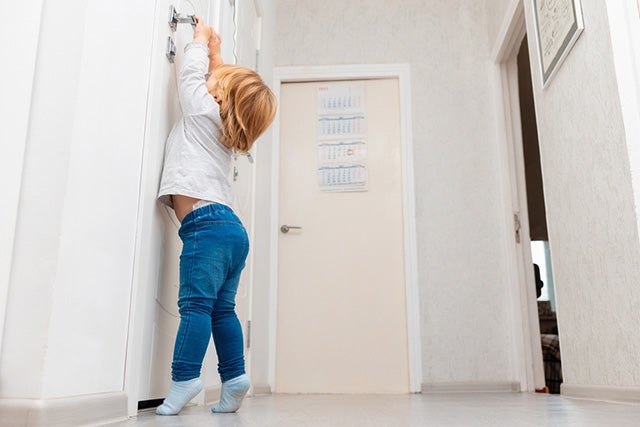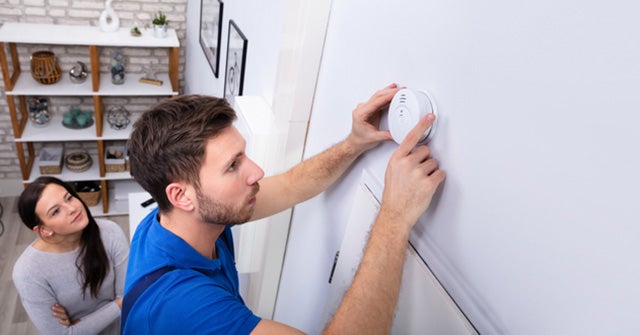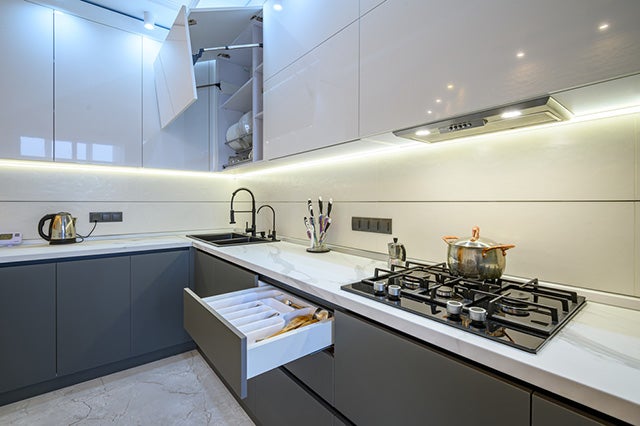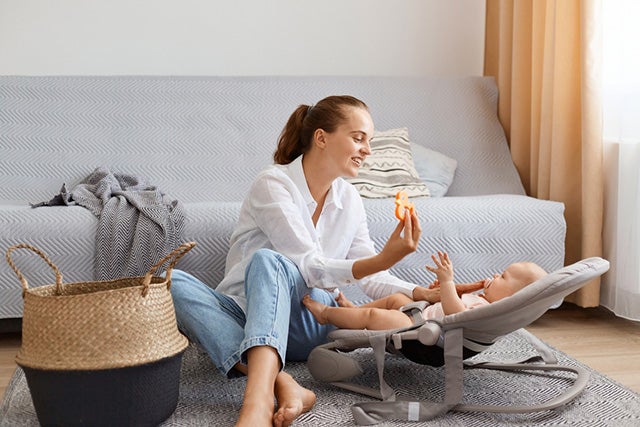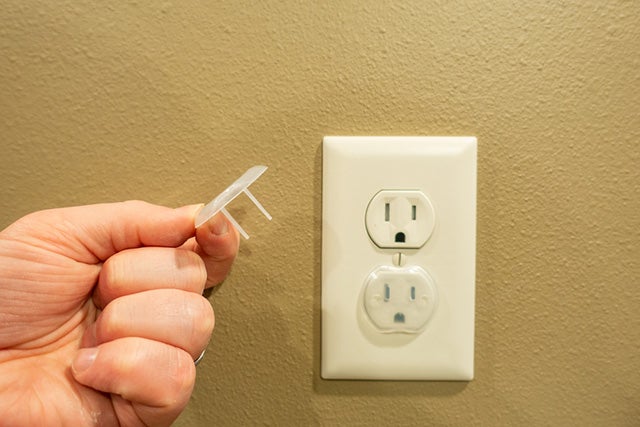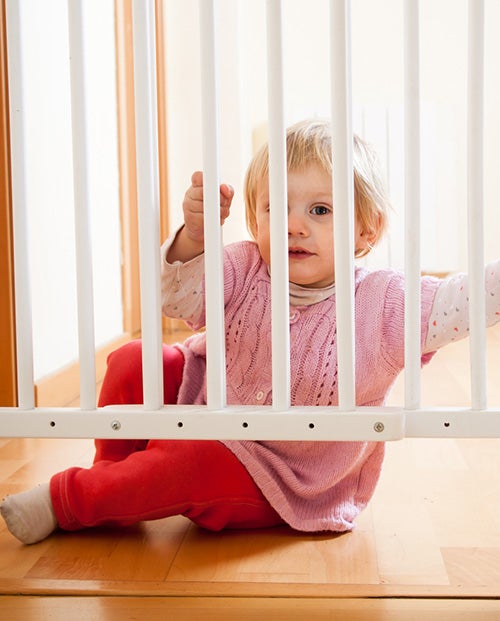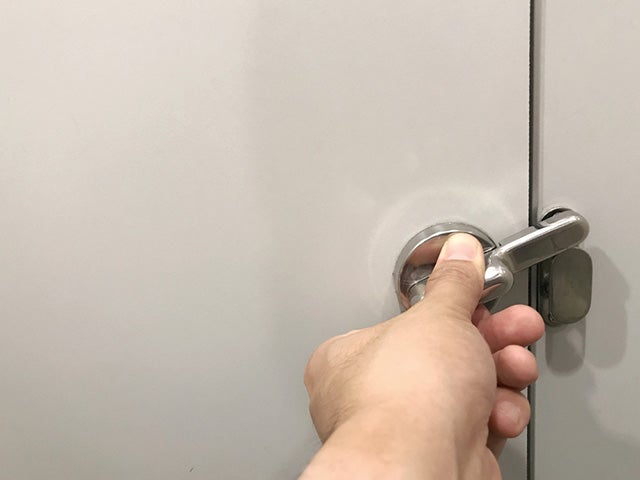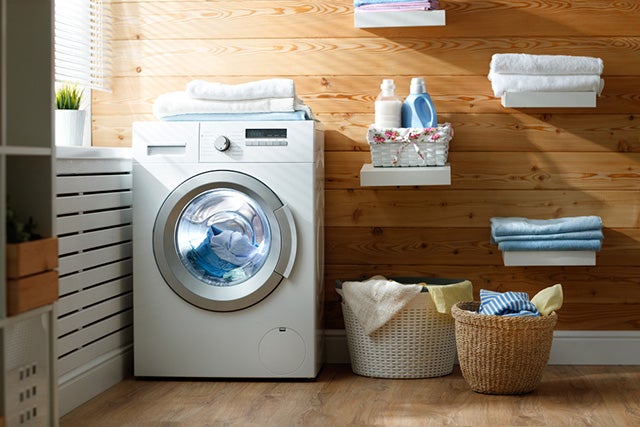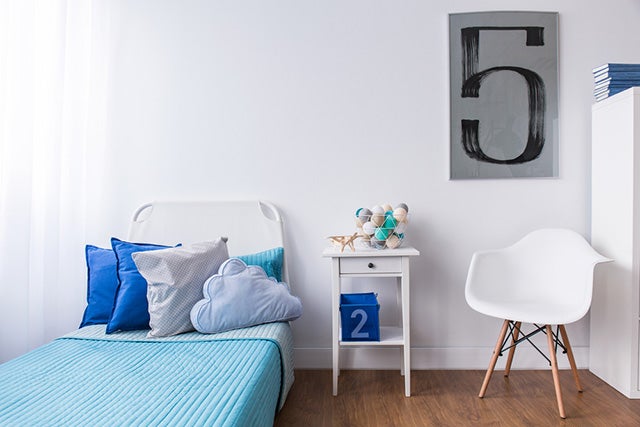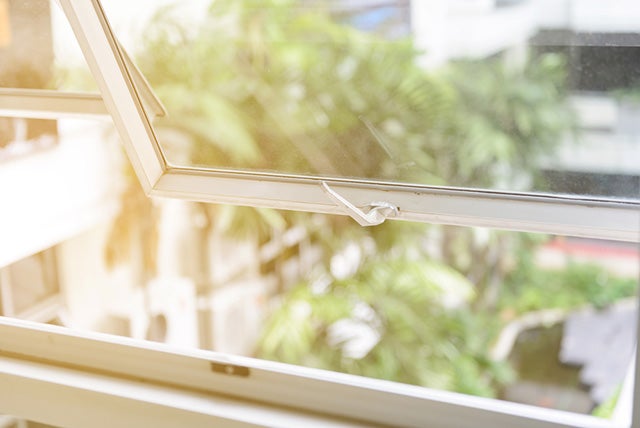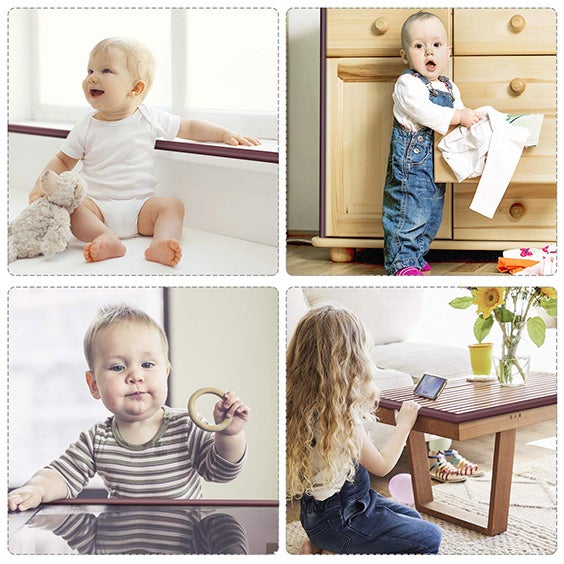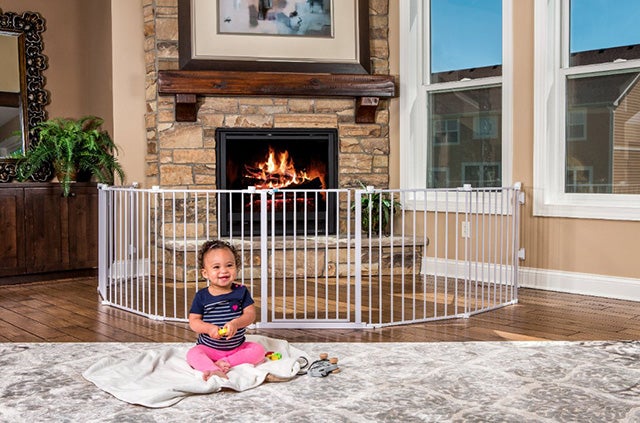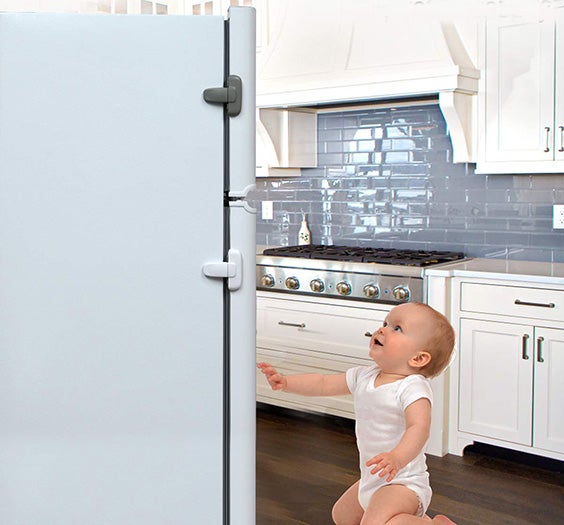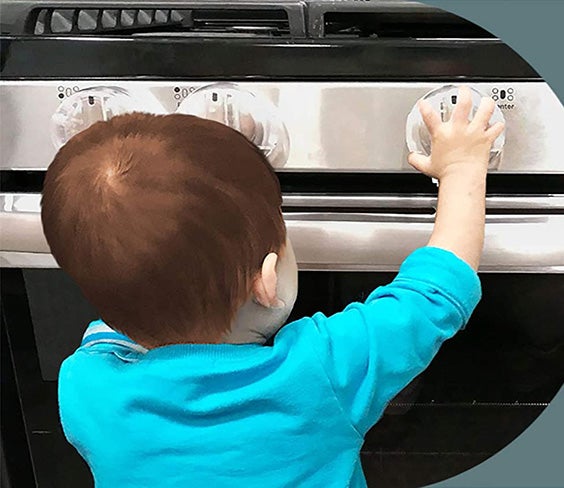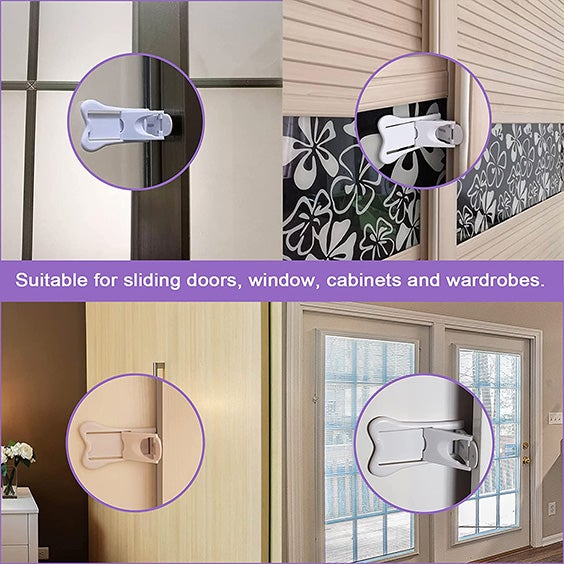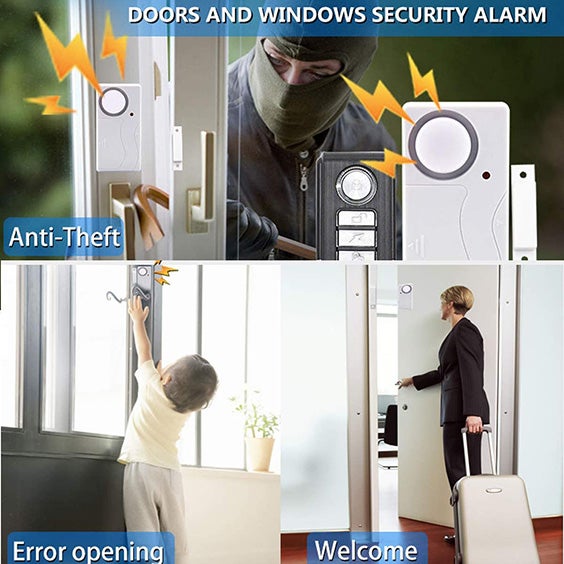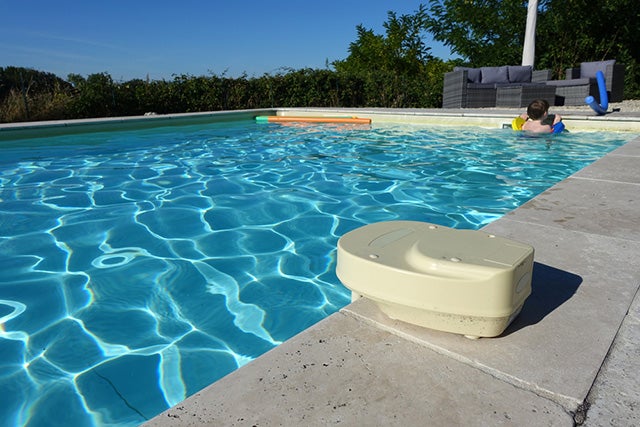When you have a child on the way, you may feel like there is so much to do, and so little time. Childproofing your home often feels like it is something you can put off – until time has run out and you are overwhelmed by all the tasks you haven’t considered.
Don’t fret, almost all parents have been there: facing the daunting task of preparing for a baby and unsure of exactly what step to take first. That’s why we have put together an easy to follow, quick guide to help address your concerns surrounding how to babyproof your house.
Step One: Before Baby is Born
Most new parents feel overwhelmed because they don’t know where to start when baby proofing – and it feels like there is just SO MUCH to address through the entire household. But, you really shouldn’t approach your baby proofing in such a manner. All it does is create unnecessary stress and anxiety. Remember, you have time before your child arrives, and even if you are at a stage that feels as if you will never have energy again – that will pass and you will once again feel energized.
Plus, it is best to take things in steps. Don’t feel like everything needs to be done all at once. Your child will need time to grow as well after birth before they are independently getting into things. Although they grow fast, it does give you time to address concerns based on their own milestones.
• Take Care of the Big Things First
When waiting for your child to be born, start making lists of the big things you can tackle first. Things such as broken or stuck windows, adjust your hot water heater to below 120 degrees fahrenheit to avoid scalding accidents, make sure all your smoke detectors and carbon monoxide detectors are up to date and working properly, cover outlets, reconsider chemical cleaners and research more natural alternatives, place non-slip pads under rugs, replace or fix broken furniture, and repaint chipped window sills and door frames – especially if your home is older and lead may be in the original paint.
• Kitchen
The kitchen is often a gathering place and many hours are spent there not only preparing meals, but also relaxing if bar tops and breakfast nooks are a part of the space. Start looking at ways to keep furniture from tipping over (such as bar stools), cabinets from being opened, and what sort of things you have stored in your lower cabinets.
Also, consider the organization that is best FOR YOU. Balancing the care of a newborn and the rest of your household can be a bit harried at first, and being able to get those kitchen utensils and food things you need without having to dig for them can be helpful. Small things you might not think of really can add up to make a big difference.
• Living/Family Room
A living or family room often becomes a secondary nursery and napping spot for many new parents. It is often a comfortable gathering area and holds many creature comforts. Consider placing a napping area for your little one in this space, as well as making it a comfortable area for you to lounge, relax, and nurse when needed. The addition of a rocking chair, comfortable pillows and playpen or portable baby sleeper are all considerations you might want to think about.
While taking care of this space, look ahead and make sure outlets are covered, window and electrical cords are up, and anything that could be pulled down or tipped over is either put away temporarily, or in a safer spot.
• Nursery
Obviously, if you are getting a nursery ready, chances are you are working from the ground up and so everything you do will be with an eye towards a safe, comfortable space for your child to both sleep in, and grow in. Make sure surface lighting has cords tucked away and are not top heavy, cover outlets, and in general keep things off the floor and in baby safe storage bins that can’t fall or tip over.
Step Two: Before Baby Crawls
Once you have some basics taken care of (and your little one has been welcomed into the home) you won’t believe how quickly he or she grows! Once they are sitting up on their own you will want to anticipate independent movement towards crawling and pulling themselves up on things. Once this happens, you need to have an eye towards the rest of your house. Even if you never plan on having your child out of your sight, you will be shocked at how quickly they will learn to get about, and an ounce of prevention will save you from dealing with issues later on.
One way to help keep your child in place one they begin to move is to create safe play areas. Playpens, jumpers, and walkers can help keep them contained and help give them the movement they crave to build balance and strength. But it never hurts to have things all in order to avoid accidents.
• Stairs
Any and all stairs need to be protected with a baby gate. You don’t want your kiddo climbing up on, or falling down, any stairs. Easy to unlatch, yet secure, baby gate choices are out there for you to pursue, including extra large lengths for wide openings.
• Bathrooms
It’s best to get your bathroom cupboards well latched, remove anything that can tip over, and invest in a toilet latch to help avoid issues with bathrooms. You might want to start getting in the habit of closing the bathroom door as well to simply avoid anything in the bathroom becoming an issue for curious little hands.
• Laundry Room
The laundry room is another area that usually has things your definitely don’t want your child to get their hands on. Move cleaners and detergents to higher cupboards, latch lower cupboards, and organize materials to avoid tipping over or being pulled down. If there is a door, perhaps start closing that as well.
• Bedrooms
Make sure all your bedrooms are child-proofed with cords tucked away; top heavy objects, such as lamps, are either stored or safely positioned, and there is nothing your baby can pull down on or get into on the floor. If you have other children, start making a habit of picking up small items that can be placed in the mouth, and providing good out of reach storage solutions.
• Windows
Time to make sure windows are well latched and not easy to open to avoid smooshed fingers! If they are open, make sure they have safety latches that keep them open when in use.
• Corners
Both wall and furniture corners can create havoc for crawling and emerging walkers. Luckily there are many corner protectors to help soften the corners and avoid bumps to the head and body.
• Heaters, Radiators, Fireplaces
If you have any heaters, radiators, or fireplaces, then you also need to child proof these in a manner that keeps from anyone getting too close while in use. Baby gates, grates, and other solutions are widely available to help with this solution.
Step Three: Before Baby Walks
Luckily, even though your child may feel like a disaster area, you can almost immediately begin working with them to avoid touching things they shouldn’t. Consistency in lessons, and providing good examples, can help your child recognize what is safe, and what isn’t from a surprisingly young age. That doesn’t mean you shouldn’t baby proof anything, but the combined efforts will go a long way towards getting your house back in order more quickly.
By the time your baby is taking on toddlerhood and walking, they will have a good idea of basic safety if you have been working with them – but you might want to address a few things for basic safety. Standing and walking quickly turns to climbing, and you will be amazed at what your kiddo can get into with the added skills – and height.
• Refrigerator and Freezer Latches
Fridge and freezer latches are a great way to avoid having doors pulled open, food things being pulled out and wasted, and your child exposed to foods they could choke on. It also helps to keep your baby from getting accidentally trapped inside.
• Stove Knob Guards
Stove knob guards are also a good idea if you have a stove with accessible front knobs. It’s easy for an adult to accidentally turn a stove knob on, so imagine how enticing it might be for a child.
• Safety Door Latches
If you have sliding doors, you may want to put safety latches on them to keep them from easily sliding open, or shut.
• Door Alarms
Any other doors that lead outside should be equipped with a child alarm to help notify you of when your child has opened a door. Many toddlers explore during the night or early morning and going out of doors is always a draw to them. You can also install door latches and locks towards the top of the door and out of reach.
• Pool Alarms
If you have a pool, a pool alarm is never a bad idea, even if you don’t have children. Isolation fences are also a good idea to help keep out neighboring animals and children as well.
You may want to read: How to Pet-Proof your Bedroom?
Conclusion
If you have an impending addition to your family, then you need to start taking into account what safety measures you feel are appropriate. Of course not all we have mentioned above has to be done; they are all just excellent suggestions to consider. Just keep in mind that a moving baby can get into all sorts of things, but that vigilance and working with your little one to not touch and listen to you can go a long way towards staying safe.
Photo credit: STEKLO/Shutterstock; StoryTime Studio/Shutterstock;
Lost_in_the_Midwest/Shutterstock; Dasha Trofimova/Shutterstock;
Jatuporn Chainiramitkul/Shutterstock; Serghei Starus/Shutterstock;
Evgeny Atamanenko/Shutterstock; Photographee.eu/Shutterstock;
Pratchaya.Lee/Shutterstock; Cmspic/Shutterstock
